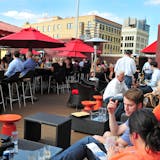Public health experts are concerned that unverified reports to a federal vaccine injury database are being misunderstood by the public and exploited by skeptics in a way that is undermining immunization efforts against COVID-19.
The raw data can be startling because the Vaccine Adverse Event Reporting System (VAERS) contains 299 reports of Minnesotans dying after COVID-19 vaccination, but most of the claims turn out to be coincidences or unrelated to the shots, said Dr. Gregory Poland, director of Mayo Clinic's Vaccine Research Group.
"I will guarantee you there are not 299 Minnesotans who died as a result of COVID vaccine," he said.
Health officials are pressing unvaccinated people to seek shots amid a worsening pandemic wave that is clogging hospital beds in Minnesota, but the remaining holdouts have been difficult to persuade and list safety fears as their top concerns. Some risk losing jobs in defiance of employer mandates while others face choices now that their children ages 5-11 are eligible for pediatric doses.
VAERS was designed as an early-warning system to amass enough reports from vaccine manufacturers, doctors and even patients to spot clusters of even the rarest side effects, but the reports themselves are not proof of cause and effect.
The COVID-19 vaccines are the most watched pharmaceuticals in medical history, with the database being part of the federal oversight that includes monitoring by the Defense and Veterans Affairs departments of their recipients. Locally, Mayo Clinic is tracking outcomes in thousands of its patients while Bloomington-based HealthPartners is part of a surveillance network of seven health systems that is monitoring 3% of the U.S. patient population.
The oversight has found rare side effects, including blood clots with the Johnson & Johnson vaccine, particularly in younger women, and a form of heart muscle inflammation called myocarditis with the other COVID-19 vaccines, particularly in younger men. Immediate anaphylactic allergic reactions have been found in two to five COVID-19 vaccine recipients per million, which is why people wait 15 minutes after receiving shots in pharmacies and clinics.
However, none of these confirmed incidents has tipped the scales against U.S. vaccine recommendations, with the risk of myocarditis being higher from contracting COVID-19 than from the shots.


